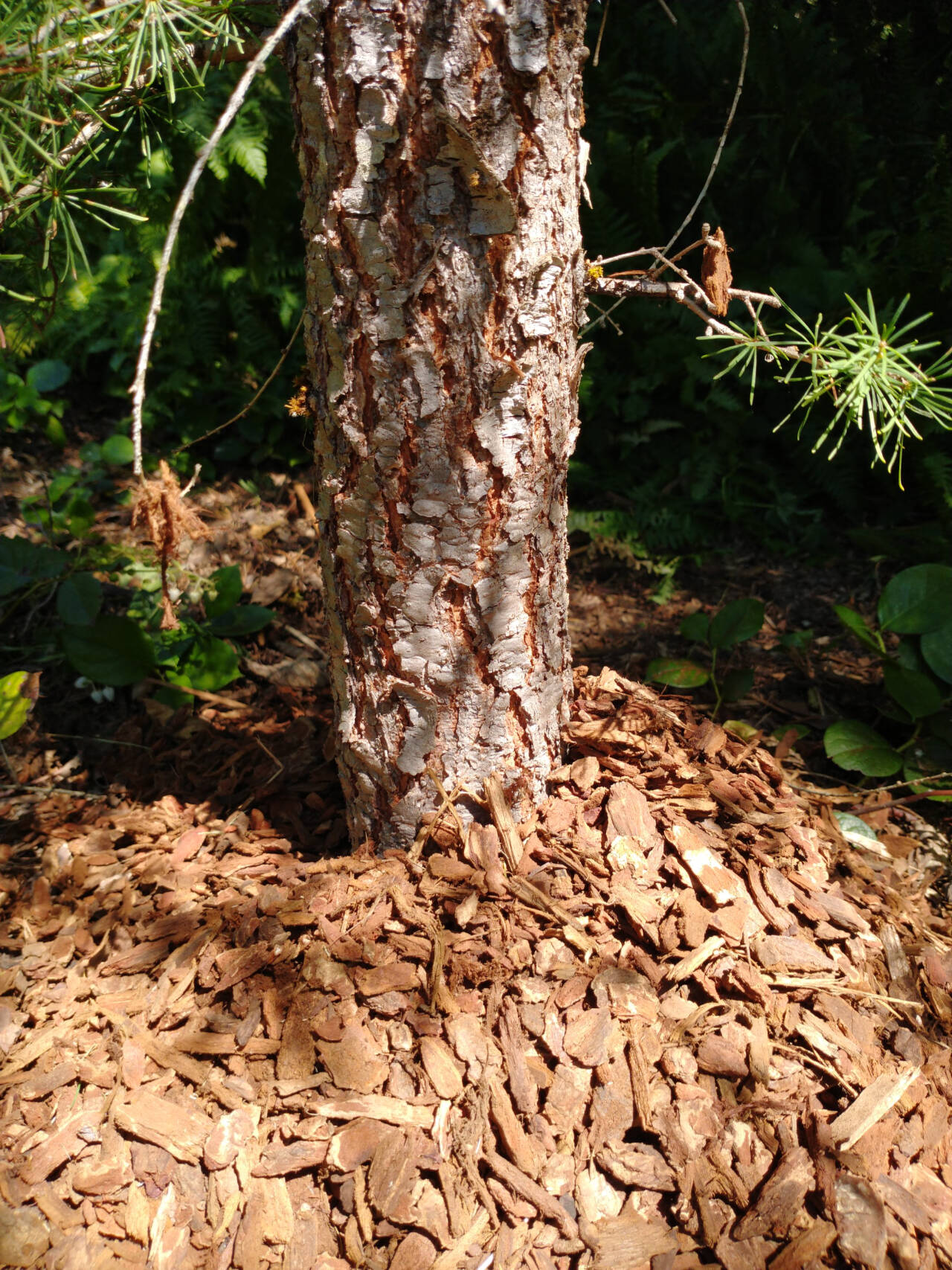My neighbor recommended that I put mulch on my flower beds. How much will I need? Will I need to reapply it every year?
Mulch provides many benefits when applied to the soil surface in a garden bed. It smothers weeds and makes them easier to remove. It holds moisture in and saves you time (and money) watering your plants. It slows run off, helping prevent soil erosion. It insulates the soil and protects plants from extreme temperatures.
In addition, organic mulches, such as compost or wood chips, add nutrients to the soil as they break down, feeding both the plants and the microorganisms in the soil.
How much mulch will you need? Most sources suggest you limit the depth of mulch in a garden bed to 1 to 2 inches at any one time. Mulching too deeply can cause the soil to remain continuously wet, depriving plants of needed oxygen and increasing the risk of root rot.
Thicker, coarser mulches such as wood chips or bark nuggets do not pack as tightly as materials with a finer texture (e.g., sawdust, compost, grass clippings). Coarser mulches can be applied up to 3 inches deep.
Mulch is sold in bulk by the cubic yard and in bags by the cubic foot. A cubic yard of mulch scattered at a depth of:
• 1 inch covers 324 square feet of soil surface
• 2 inches covers 162 square feet of soil surface
• 3 inches covers 108 square feet of soil surface
To calculate how much mulch you need, measure the square footage of the area(s) you wish to mulch. Then use this formula:
Total area (in square feet) x desired depth (in inches) ÷ 324
This calculation gives you the number of cubic yards needed.
Note, if you are buying mulch by the bag, it takes thirteen and a half 2-cubic-foot bags of mulch to make up a cubic yard or nine 3-cubic foot bags.
For the best outcomes when applying mulch, follow these tips:
• When selecting a type of mulch think about the plants it will surround and their special needs. For example, when mulching acid-loving plants (e.g., blueberries, rhododendrons, azaleas) use wood-products which are naturally acidic and avoid mushroom composts and composts that contain yard wastes or animal manures which tend to be alkaline and have a high salt content.
• Choose a high-quality mulch and get it from a reputable source. Mulch can transport weed seeds, diseases, and pest into your garden or landscape.
• Before mulching in the spring make sure the soil temperature has risen enough so that you will not be trapping the cold under the mulch. Always remove weeds before laying down mulch.
• Do not pile up mulch at the base of a tree or bush. This is sometimes called a “mulch volcano” (see photo). When mulch is in direct contact with plant material or the bark of a tree it creates the perfect conditions for wood rot or the invasion of pests.
• When using wood-derived mulches, add a source of nitrogen to the soil before applying the mulch. Soil microorganisms that decompose wood-based mulches will compete for limited soil nitrogen and cause temporary nitrogen deficiencies for nearby plants.
• Finally, organic mulches are derived from natural materials that decompose over time. You will have to add more mulch over time to maintain the desired depth. Most sources suggest that you break up old layers of mulch before applying new mulch to allow water to be absorbed. The timing of subsequent applications will depend on the type of organic mulch and the rate of breakdown.
Jeanette Stehr-Green is a WSU-certified Clallam County Master Gardener.
Make sure to join us for the upcoming Green Thumb presentation, “Forest Management for Landowners,” presented by forestry expert Norm Schaff, set for noon-1 p.m. Thursday, Aug. 25, via Zoom.
Get the link at extension.wsu.edu/clallam/master-gardener-calendar. Or, join by phone by calling 253-215-8782 (meeting ID 920 0799 1742, passcode 709395).
Whether you have two wooded acres or 20, there’s much more to forest management than you think. Schaff will talk about the common conditions, benefits and risks of living in a Clallam County area forest environment. He will discuss amenities and inconveniences in evaluating your own forest including assessing tree and forest health, and common diseases and pests. He will also talk about the regulatory environment — what landowners must do to maintain their forests as well as management practices that may be utilized in your forest.
Presentations cover basic gardening topics relevant to most home gardeners. Seminars are free, but donations to help support the WSU Clallam County Extension Master Gardener program or Master Gardener Foundation of Clallam County are appreciated.


